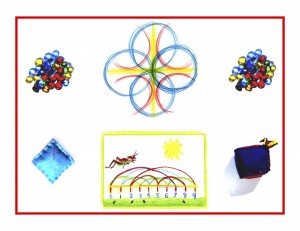Day 105
For one year, 365 days, this blog will address the Common Core Standards from the perspective of creating an alternate, ambient learning environment for math. Ambient is defined as “existing or present on all sides, an all-encompassing atmosphere.” And ambient music is defined as: “Quiet and relaxing with melodies that repeat many times.”
Why ambient? A math teaching style that’s whole and all encompassing, with themes that repeat many times through the years, is most likely to be effective and successful. Today’s standard will be listed in blue, followed by its ambient counterpart.
Number and Operations in Base Ten 1.NBT
Understand place value.
3. Compare two-digit numbers based on meanings of the tens and ones digits, recording the results of comparisons with the symbols >, =, and <.
After becoming familiar with the -teens and -ty’s along with regular practice counting to 100 or 120, the above exercise can be attempted with lots of support, if needed. As always, any new concept should be introduced with a story! Here’s the equations and equivalency story from the Grade 1 Daily Lesson Plans book.
Equations / Equivalency
The numbers love to play, alone and in teams. Often their games are tied, with both sides scoring the same. The equals sign is a good score keeper who sees both sides. The numbers also like to compete one on one, to show whose value is greater or less. Then they use a special sign, one that cheers the greater number, turning away from the number that’s less. (A “talking” gesture with your fingertips shows the “greater-less than” sign.)
The hand gestures that accompany the story clearly show not only the operations signs for equal and greater-less than, but show their functions and meanings as well. This story could be told after the two-digit numbers are well established using story, art, and movement. The day after the story is told, the children retell it and then draw a colorful picture of it. The concept is practiced after this, with manipulatives and real numbers first, then on paper.
The morning circle is an excellent time to practice this as well. The teacher could call out two numbers and have the child repeat the numbers along with using the hand gestures mentioned in the story. Here are some examples with the accompanying gestures: 18 and 18 / equal sign (Hold hands in front, palms down facing different directions, with index fingers slightly pointed.) 27 and 30 / greater-less than sign (A “talking” gesture with fingertips, the open end (fingers) toward the 30 and closed end (wrist) toward the 27.) The two numbers could be represented by a closed fist held up in the proper position as each number is said.
As always, it’s the movement, story, and art that win the day with math! Knowledge ensues in an environment dedicated to imaginative, creative knowing, where student and teacher alike surrender to the ensuing of that knowledge as a worthy goal. More Common Core Grade 1 Number and Operations in Base Ten Standards with their ambient counterparts tomorrow!












